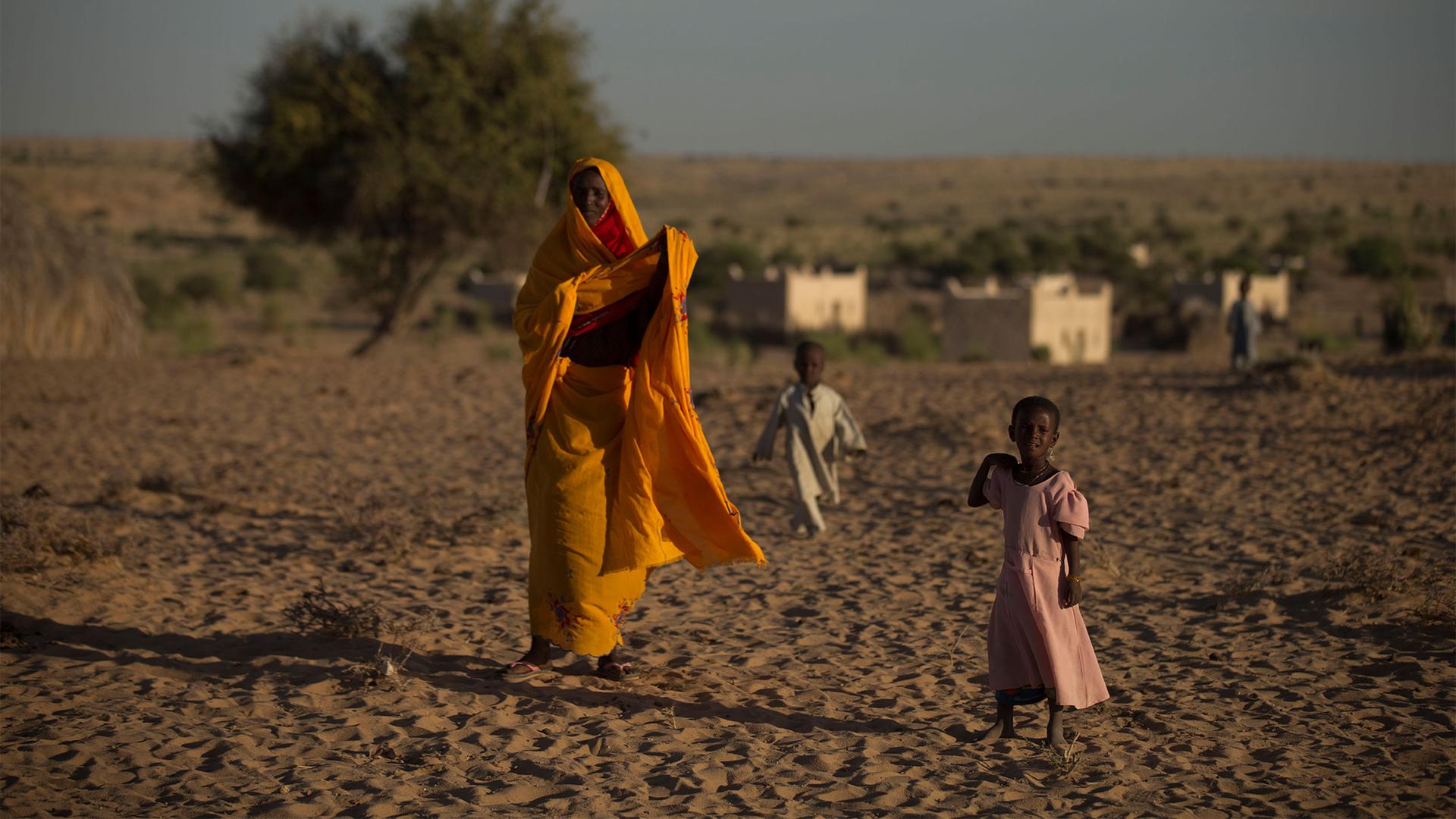At the NATO leaders summit in Brussels last week, the defense alliance said it would begin formally studying how climate change impacts security threats, calling climate change, “one of the defining challenges of our times.”
Officials also pledged to “significantly reduce greenhouse gas emissions from military activities,” with a goal of promoting military operations that are more resilient and less polluting.
Related: Young activists are making their mark in the climate debate
The alliance said that climate change makes it harder for militaries to do their jobs.
A greater understanding of the ways that climate change exacerbates conflict can help design peacebuilding missions that work, said Janani Vivekanada, who heads the climate and security program at adelphi, a research institute in Germany.
Vivekanada’s group is leading a new initiative called “Weathering Risk,” that combines the latest climate change data with analysis of social and economic conditions to help decision-makers see the connections between climate and conflict.
Related: Luxembourg takes the lead on climate finance
“It’s about connecting climate science to policy, to support climate security, risk-informed decisions and evidence-based solutions,” said Vivekanada. “It’s aimed at all actors across the defense, development and diplomacy communities.”
Vivekanada spoke to the World’s Marco Werman about the significance of NATO taking on climate change.
Marco Werman: What is the significance of NATO officially recognizing climate change in its planning?
Janani Vivekanada: I think this is a really significant step for essentially three reasons. The first is the symbolic value — the diplomatic value of affirming as a military organization that climate change is a threat to international peace and security, not just for the future, but one that’s already playing out around the world.
The second reason is more operational. It’s clear to military actors around the world that they need to better anticipate and prepare for the resulting crises that climate change is contributing to. There’s also an increasing need for humanitarian responses, one that NATO’s historically tried to avoid. But as military actors are faced with more and more climate disasters, they’re going to be increasingly called upon as first responders. They need just what this action plan is calling for: a better understanding of the interactions between climate change, peace and stability, so they can ensure that military responses are not climate blind, they’re not inadvertently making things worse because they’re going in, not really taking account of these climate risks.
As you say, these impacts are happening now. Talk about the example of Lake Chad in west central Africa. What’s the impact there?
This is a tragic example. Lake Chad of the Sahel, which is made up of Nigeria, Chad, Niger and Cameroon — home of one of the most intractable conflicts that we’re seeing between state security forces and armed groups, such as Boko Haram and Islamic State West Africa Province. The drivers of this conflict are manifold, but climate change is making things a lot worse for these communities; 90% of them have livelihoods that are dependent on climate-related rainfall patterns.
When I was in the field talking to members of armed groups, many of these people were saying they had no ideological interest or affinity with what these armed groups were preaching. They actually cited their decision to join these groups, join Boko Haram, for example, because of the climate-blind responses of military responses, things like slash and burn tactics, things like closing fish markets, banning the cultivation of certain crops or certain livelihoods. As your livelihood is becoming less and less viable, not just because of climate change, but because of these military strategies, the offer of armed groups as an anti-state vengeance mechanism becomes more prominent.
You’ve actually written about the relationship between climate change and the Israeli-Palestinian conflict. So, in that case, how has an awareness about climate change by organizations on the ground help resolve conflict?
The relationship between climate change and peace and security can be this really negative, vicious circle which can lock in conflict, but it can also be a vehicle for peace building. So, in Israel-Palestine — in the Levant, more broadly — this is the most water-scarce region in the world. And whilst it’s not the driver of conflict, the rising temperatures that the region is seeing, decreasing rainfall and rise in extreme weather events, are all contributing to worsening these very, very fraught relationships between communities.
But, we can see green shoots within this. Water is at the center of the crisis, but it’s also been used as a vehicle for peace building, using the environment and shared resources like water as a vehicle to create dialog and discourse, and ultimately, trust between groups who would otherwise just not come together.
A few years ago, the Pentagon cited climate change as a threat multiplier. How much further is NATO pushing that concept with its announcement this week?
It’s moving us from the rhetoric to being able to work on a more practical level. I think it really is a sign that NATO is taking this seriously. Where we were is, “OK, there’s a link between climate security,” and I think where this action plan is taking us is, answering the “So what?” OK, yes, [climate change] is a risk to peace and security, so what do we do about it?
This interview has been lightly edited and condensed for clarity.
